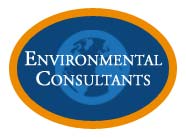Insurance applications are tedious, but subtle changes can yield big premium-savings.
Certainly most A/E and environmental consulting firms are carefully examining all of their overhead items with an eye toward reducing costs. Professional Liability (PL) insurance premiums, plus the variable costs associated with deductible obligations (post loss), are generally among the larger single line items after rent/payroll/health insurance.
To a great extent, the costs associated with your professional liability insurance are influenced by the manner in which you present or portray yourself and your firm during the PL application process. I recognize that the 8-12 page annual application process is akin to a “root canal” for most CFOs, principals, and office managers.
However, you should realize that this process is a “beauty pageant,” where subtle changes or clarifications can have material impacts on costs— and, of course, any savings is pure profit.
Below are some of the ways in which we help our clients better describe themselves to PL underwriters during the application process.
1. Outline what you do with appropriate percentages. This may appear simple on the surface, but let me better illustrate my point with two examples:
Architect— To you (the architect), it may seem accurate to describe yourself as 100% architectural. But in reality, I can virtually guarantee that you provide specifications of interior fixtures, finishes, or non-structural details. I would classify these services as Interior Design— a much-lower rated service type yielding much lower costs. Owners’ representatives, client advocacy services, public advocacy, testimony and reports before zoning/planning boards are all services provided by an architect that, in themselves, do not involve architectural design per se. (There are too many other similar examples to list here.)
Engineer— Let’s say that you are a civil/structural engineer engaged in bridge design/inspection. “Bridge Design” is viewed as a high-rated service type (in fact one of the highest). Are you really doing ALL bridge design? Or, are you engaged in the design of the approaches as well? Can some of those services be described as “highway design?” What about inspections? Certainly those are considered “reports/opinions.” (highway design and reports/opinions receive a much lower rate factor than does bridge design.)
It’s not easy to capture this information, but it’s well worth the effort (financially) to work on these nuanced responses.
2. Clearly identify your direct reimbursibles (DRs). Travel, per diem, reproduction costs, mileage charges, etc., are considered DRs (although sub-consultant pass-throughs are not). The industry standard is 3% to 6% for DRs (some engineers engaged in Department of Transportation work will have DRs higher than 10%). Clearly identifying those costs should reduce your ratable base (and, correspondingly, your premiums) by the same percentage. I have quite a few clients who will say that they do not track these costs because they don’t like to “nickel and dime” their clients. They charge a fixed fee, or their rate contemplates these costs. OK. Fine. However, you still can include a “best guess estimate” of what the DRs will be as a percentage of your gross. For example, a $30,000 premium that does not take into account DRs of 6% results in overpayments of $1,800 annually. This tip alone covers the cost of your The Zweig Letter subscription.
3. Clearly identify your abandoned projects. Over the past year-and-a-half, it would be difficult to find an A/E firm that did not provide design services on a project that will never be built. Projects have been abandoned due to, among other things, loss of funding by developers, changes in plans or projects, the sale of undeveloped property, and bankruptcy filings. Some carriers will make you “list” abandoned projects and then exclude coverage for claims arising from them. Be careful of this. I would not advocate ever placing such a list on a policy for one of my clients. It may be unlikely, but it’s still possible for you to be sued even if the project does not go forward. Other carriers, however, allow you to identify the revenue associated with abandoned projects and remove that revenue from your “ratable revenue,” yielding lower costs.
Timothy Esler’s original articles are published in The Zweig Letter.






 We're more than just brokers. We're A/E specialists, delivering the right coverage and exceptional value and service to hundreds of design firms of all sizes. Of course we leverage the latest industry resources to provide you with coverage, risk management and contract review tailored to your practice. But we also remember the difference between simply billing clients and actually serving them. See for yourself. Contact us of a competitive quote on your professional liability insurance.
We're more than just brokers. We're A/E specialists, delivering the right coverage and exceptional value and service to hundreds of design firms of all sizes. Of course we leverage the latest industry resources to provide you with coverage, risk management and contract review tailored to your practice. But we also remember the difference between simply billing clients and actually serving them. See for yourself. Contact us of a competitive quote on your professional liability insurance.